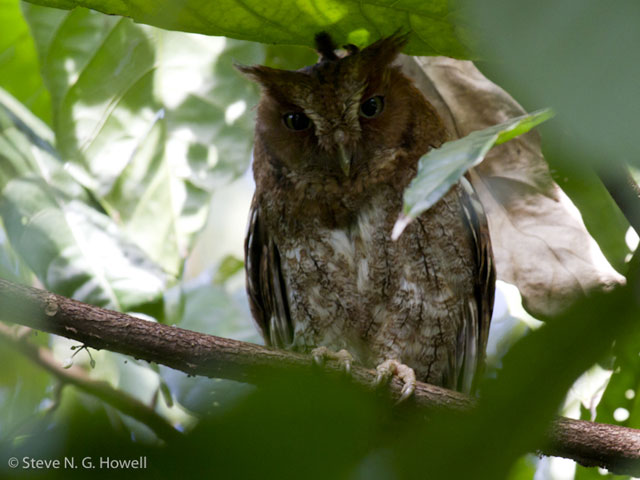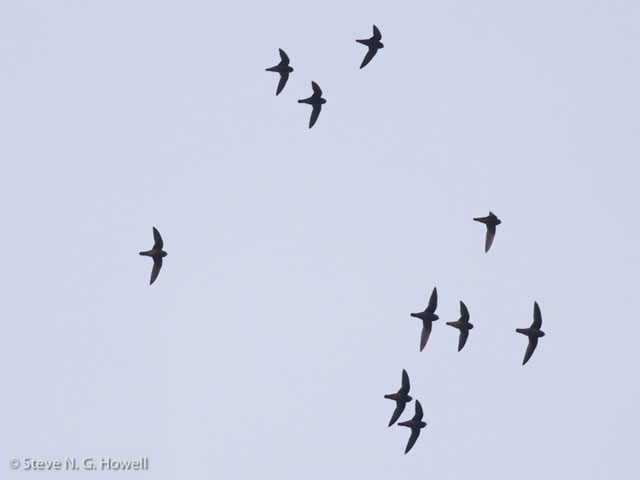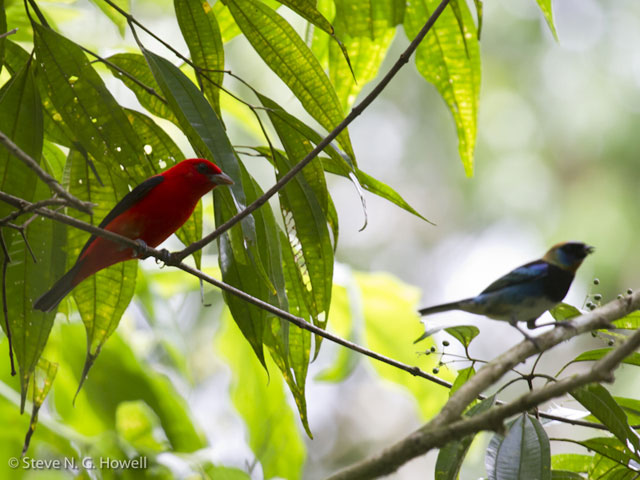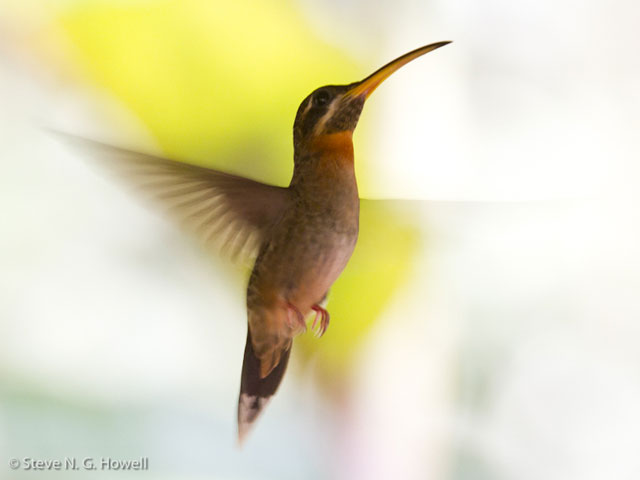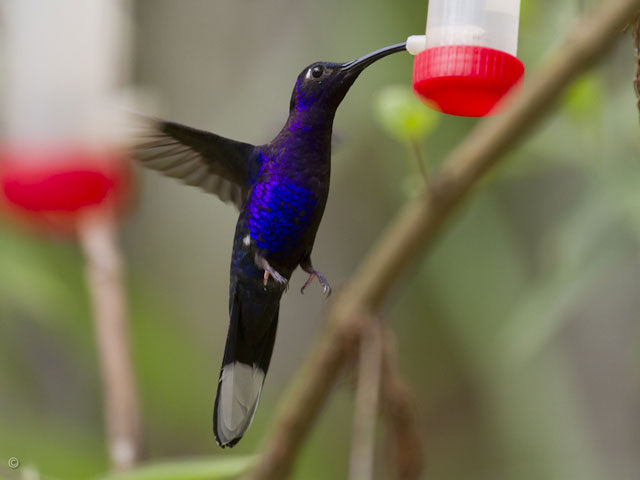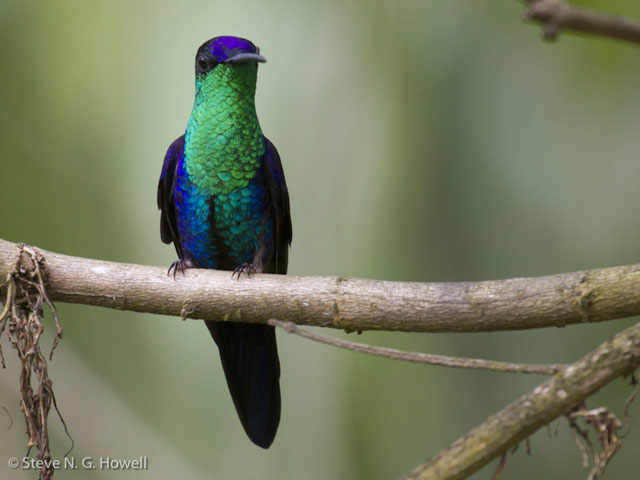From the Field
June 8: Jon Dunn and Gavin Bieber from their ongoing tour to Gambell and Nome, Alaska
Gambell began slowly with few migrants, especially from the Asian side, but there was lots of of ice this year, a spectacular change from recent years. We saw all of the regular species - it's hard to think of these as "regular" - including Emperor Goose, Spectacled Eider, Arctic Loon, Dovekie and White Wagtail, and of coure the endless procession of tens of thousads of alcids (below). A Red-necked Stint and several Common Ringed Plovers, including a very cooperative pair (below) on territory were perhaps the most notable Asian species in the early days but we also had at least three adult male stejnegeri White-winged Scoters (below) feeding with one adult male North American deglandi. This distinctive Asian subspecies is best known in North America from Gambell where we have recorded it now on three occasions.
A minor weather system starting on 4 June brought more migrants of note. On the early morning beach watch an adult Ivory Gull flew in from the northwest and then continued on north, then east around the Point, and later we found an adult Black-headed Gull, a female Ruff, and best of all a bright Little Stint (below). The next day a Wood Sandpiper (below) spent a short period of time in the Corner Marsh and later a Temminck's Stint (below) was found south of Troutman Lake along with two more Red-necked Stints. We left Gambell about noon on the 6th with a poor list of Asian landbirds but a fine selection of Asian waders.
Our first day in Nome was cold (freezing) with fog, drizzle and a bit of light snow. Once the fog cleared on Coffee Dome we located three Bristle-thighed Curlews and had some of the best views we've ever had of this species. Tomorrow we'll bird Safety Sound and then head back to Anchorage.
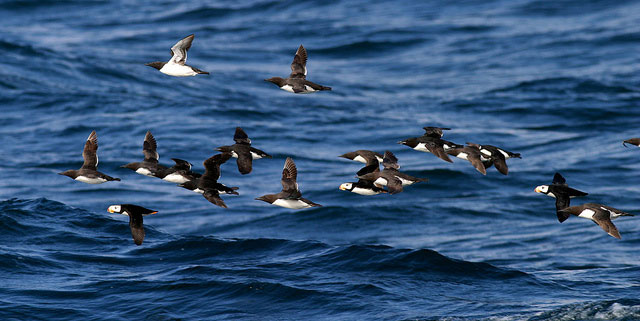
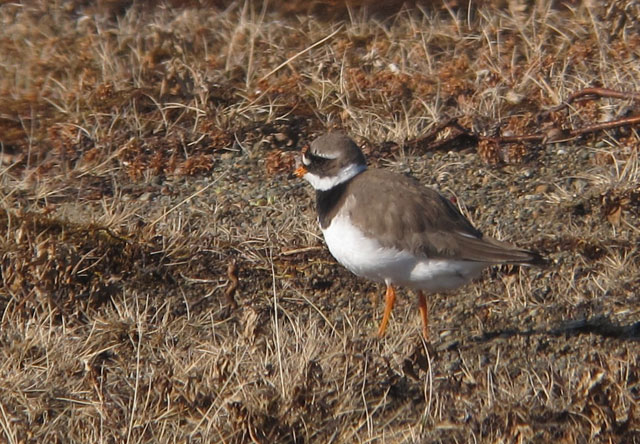
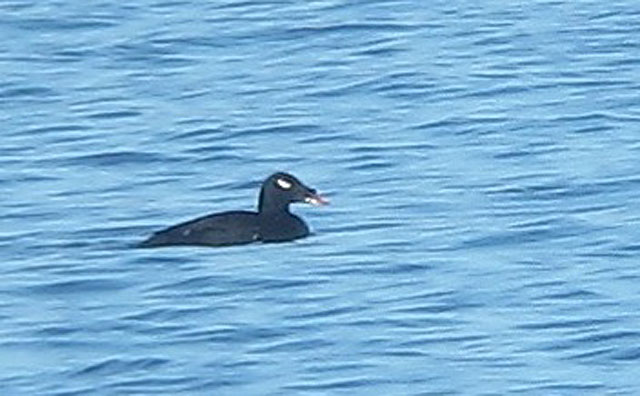
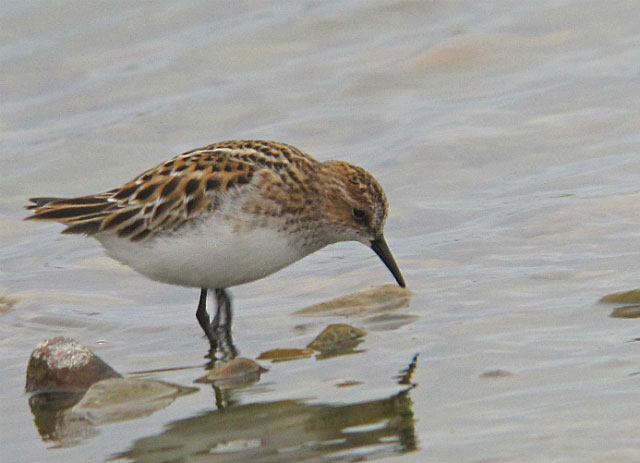
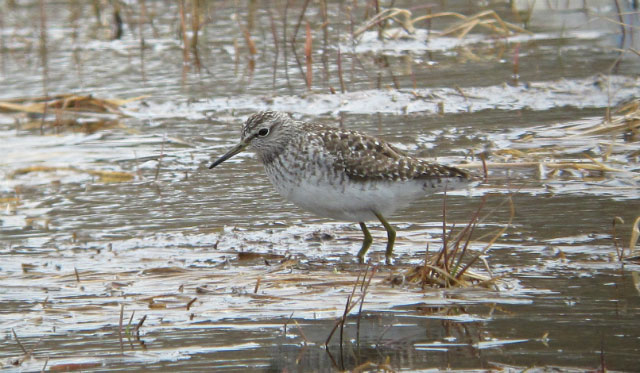
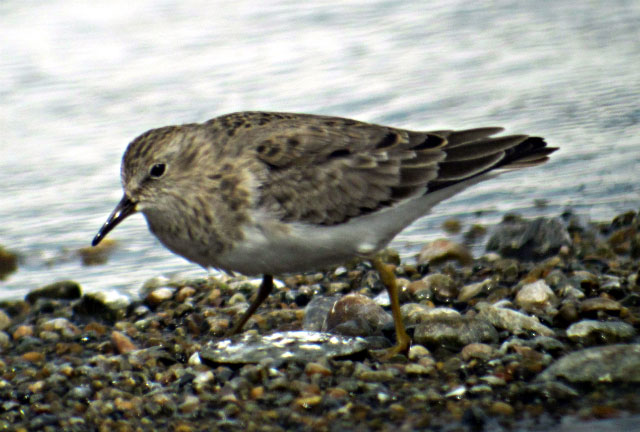
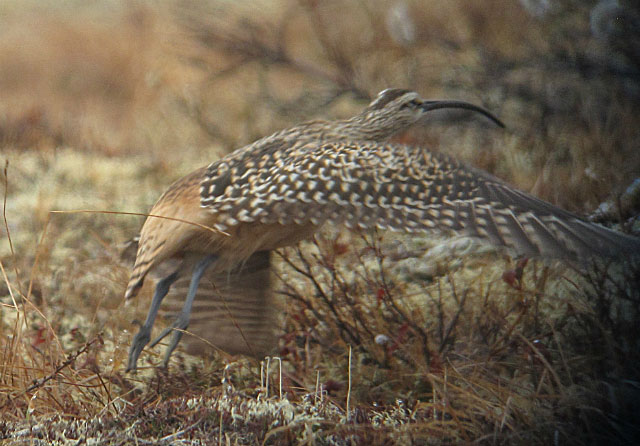
May 26: Yann Kolbeinsson on his just-completed scout of Turkey
I had heard that birding in Turkey was supposed to be good, but I have come to realise that this description is putting it very mildly. Birding the south and east of Turkey is quite simply astonishing, or should I say breathtaking? Turkey‘s geographical position creates an array of habitats which all have their characteristic species among the more widespread species. The Mediterranean biotope boosts birds such as the recently rediscovered Brown Fish Owl which breeds at a very few localities, Krüper‘s Nuthatches, the more abundant Cretzschmar‘s Bunting in the maquis covered hills, while Graceful Prinias and Black Francolins inhabit lower elevations. Dominating the Mediterranean influence were the snow-capped Taurus mountains which offered views of Caspian Snowcocks and Lammergeiers! Further east, the drier steppe and shrubby hills extending north from the Syrian and Iraqi deserts provided more exotic birds such as the See-see Partridge and Red-tailed (Kurdish) Wheaters while the very local Chestnut-shouldered Petronia was to be found in pistachio cultivations and Iraq Babblers along the river Euphrates. More colourful, for a change, were Blue-cheeked Bee-eaters seen on several occasions. The Turkish far east, Eastern Anatolia, bordered by Iran, Azerbaijan and Armenia comes with a very different atmosphere. It is also home of Turkey‘s highest mountain, Mt. Ararat (5137m / 16854feet). Landscapes there reminded me more of my home, Iceland, with volcanoes, recent lava fields, numerous wetlands and a country deprived of forests. With that comes a new set of birds, which includes the scarce Mongolian Finch. Crimson-winged Finches were easy to see in the lavafield (replacing Snow Buntings of the Icelandic lava fields!) while barren hills had Gray-hooded Buntings found here at their northwestern limit of their distribution. Hopefully all these will be on offer on the upcoming Turkey tour in spring 2014, and many many more including the often numerous White-winged Black Terns, splendid-looking White-throated Robins, near omnipresent Black-headed Buntings and Long-legged Buzzards. Images below: Brown Fish Owl, Krüper‘s Nuthatch, Lammergeier, Red-tailed (Kurdish) Wheatear, Taurus Mountains, Crimson-winged Finch, Lava fields.
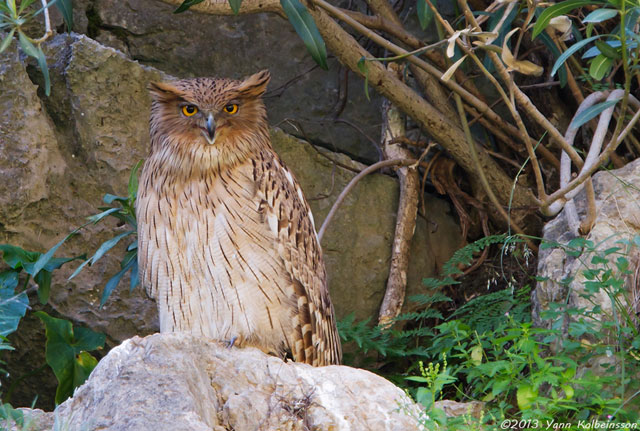
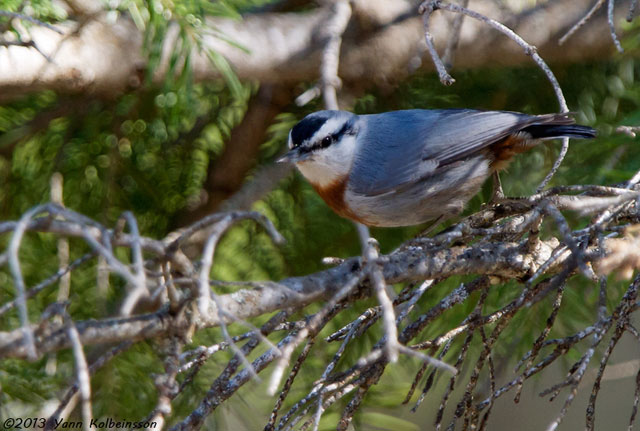
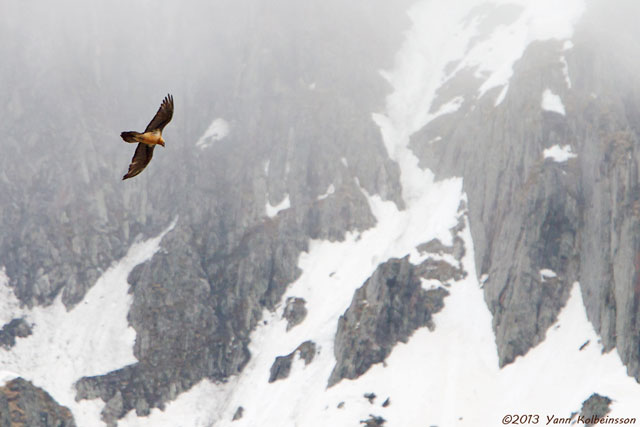
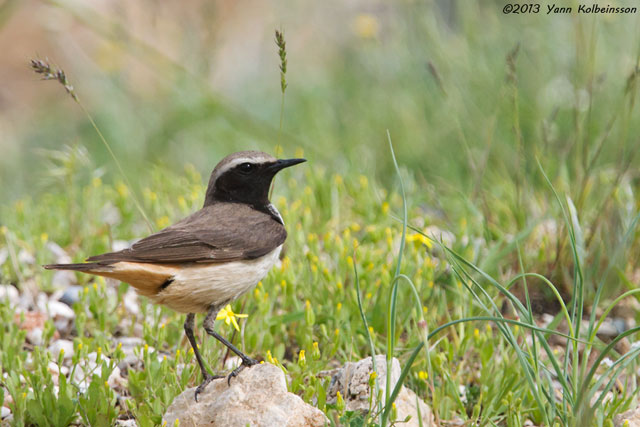
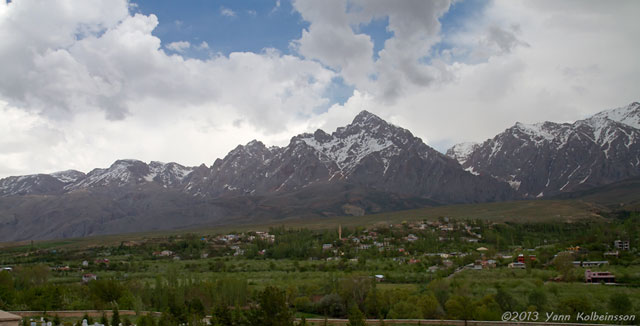
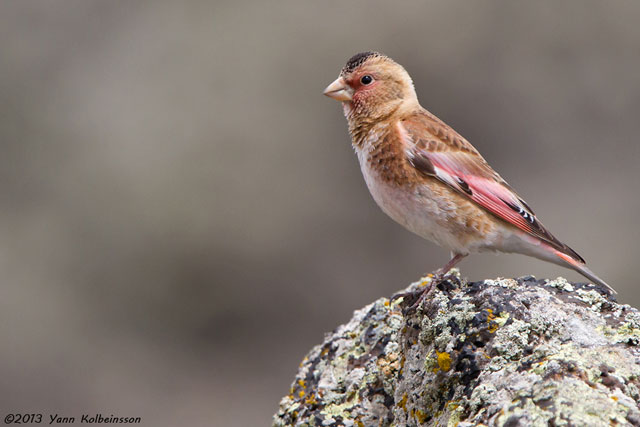
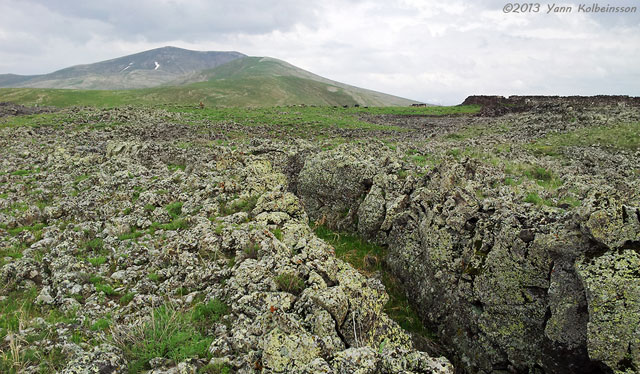
May 22: Gavin Bieber on his just completed Arizona: Owls and Warblers tour
We managed to see an amazing nine species of owls this year, including superlative views of a roosting Spotted Owl (below), and warblers were cooperative too with snazzy Red-faced and Olive Warblers (below). As with any trip to SE Arizona, hummingbirds are always a hit, and we had great views of a male White-eared (below) among the nine species recorded. Among the remarkable18 species of flycatchers we had excellent views of Tropical Kingbird (below) perched near the Rio Rico Ponds. The weather was relatively mild (by Arizona standards), the mountains are recovering from the fires of 2011, and the scenery was as fantastic as always (below). It's hard to think of a more spectacular place to bird in the U.S. in May.
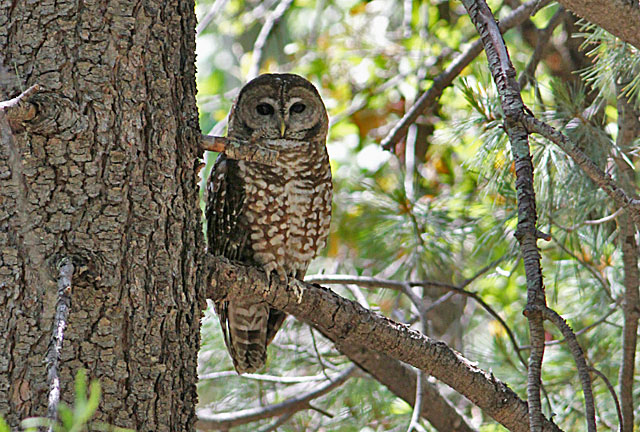
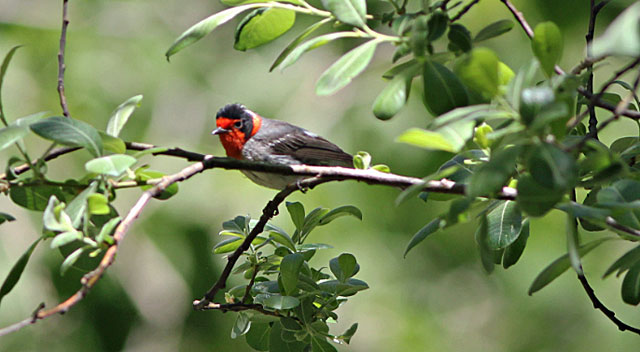
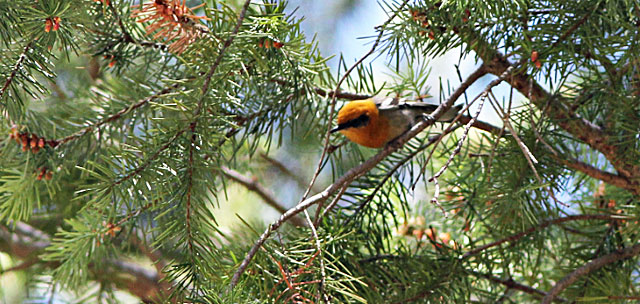
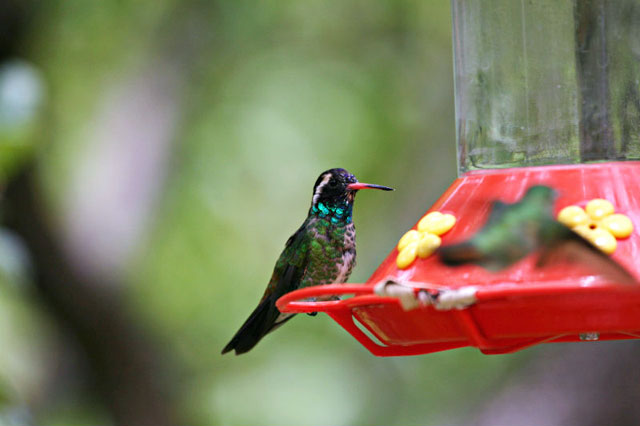
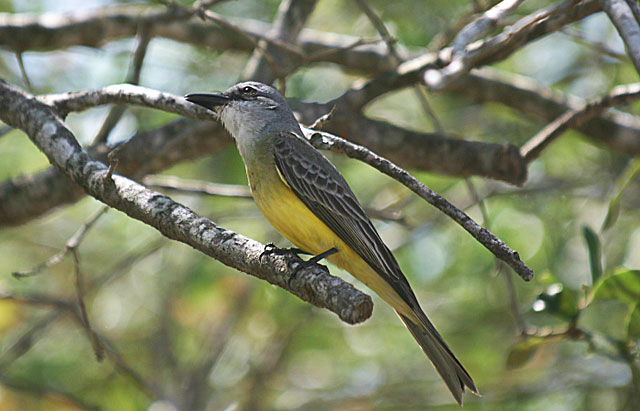
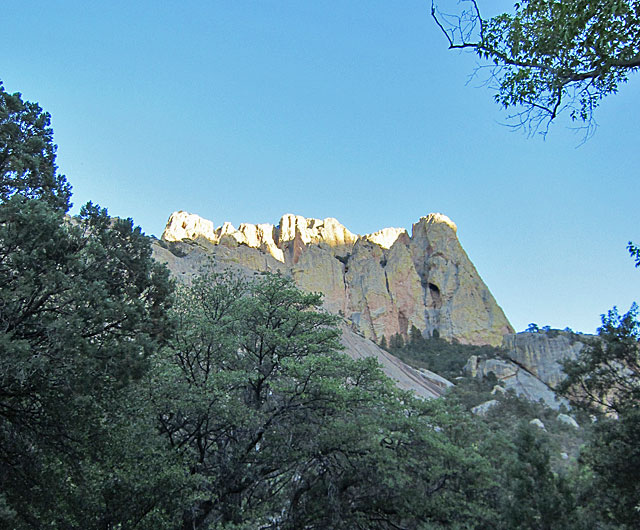
May 8: Paul Lehman on his just-completed "repositioning" cruise from San Diego to Vancouver
The inaugural WINGS Pacific Coast "repositioning" cruise 14-17 April was a great success, with superb birds, a fine ship, excellent food and service, and all at a remarkably reasonable price. We experienced strong headwinds for two of the days but our ship the Holland America "Zaandam" sailed steadily through it with flying colors, and the pterodroma petrels were all up and flying! We had a great showing as our group saw one Hawaiian Petrel (below), one "Dark-rumped" Petrel, 10's of Murphy's Petrels, and one or two Cook's Petrels. We also tallied a fine Laysan Albatross, a rare Flesh-footed Shearwater, many Black-footed Albatrosses and Fork-tailed, Leach's, and Black Storm-Petrels, a number of Parakeet Auklets and Scripps's Murrelets, several Black-vented Shearwaters, and over 500 Sabine's Gulls--as well as Humpback and Fin Whales--and all in grand style and comfort!

May 6: Gavin Bieber on his just completed tour of South Florida
Our survey of the habitats and avifauna of this remarkable region took in such wonderful sights as the seemingly endless “sea of grass” of the Everglades, the heavily developed metropolitan coastline of Southeast Florida, which maintains a nice selection of protected areas and shelters many more species than just the celebrated “exotics,” the stunning cypress bottomlands, heavily laden with epiphytes and flowers, the upland pine/oak scrub and grassland savannahs of the central peninsula, coastal mangroves and bays, and stretches of sparkling white sand beaches. We enjoyed a myriad of birds too, from breeding Brown Noddies (below) and an incredible fallout of over 200 Yellow-billed Cuckoos on the Tortugas to migrant Bobolink and Blackpoll Warblers (both below), and even saw a few vagrants from the Caribbean like Black-faced Grassquit and Western Spindalis (both below). Add to that mix 19 species of reptiles and amphibians, 16 species of fish, and a host of pretty butterflies and dragonflies and the diversity of south Florida in the spring becomes hard to beat!
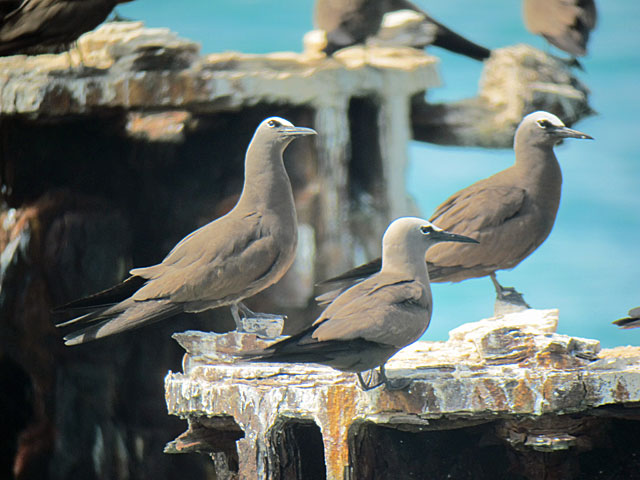
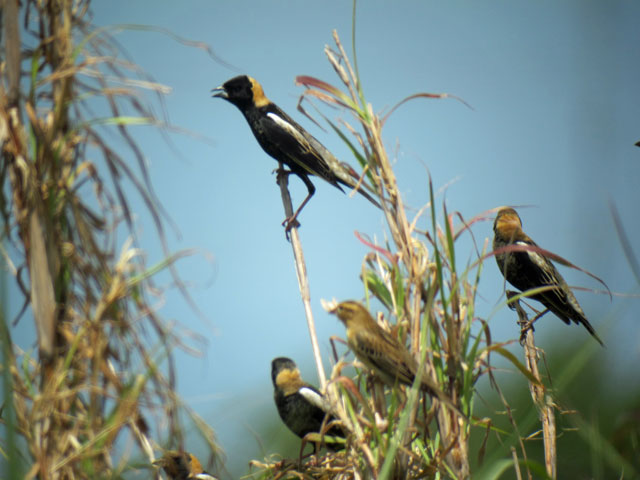
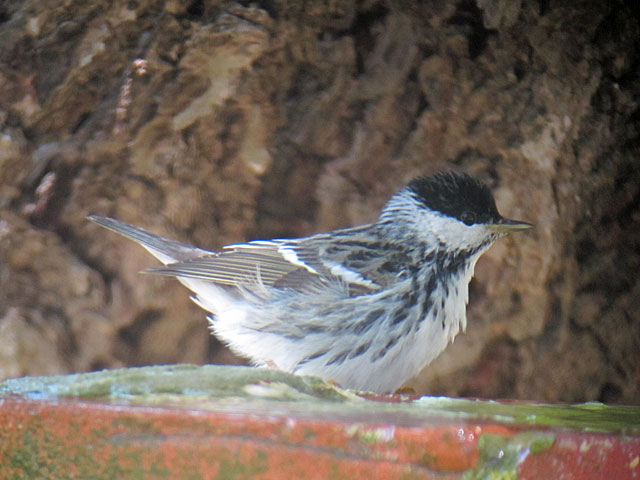
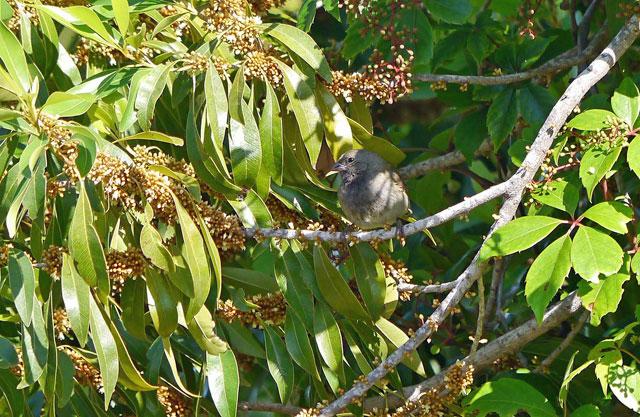
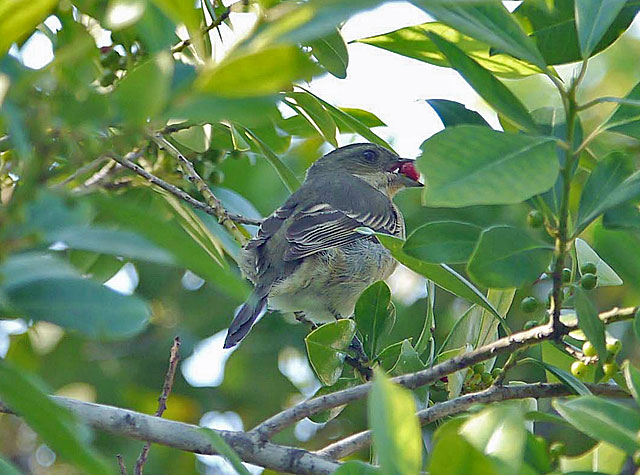
April 29: Paul French from his on-going tour to Georgia and the High Caucasus
We’ve just reached the half-way point on our tour of Georgia, and are currently reflecting on our time spent in the Greater Caucasus, the highest mountains in Europe. All of the hoped-for specialities performed admirably, and we were treated to extended encounters with Guldenstadt’s Redstart and Great Rosefinch (images of both below) at their only Western Palearctic location. Indeed, the rosefinches provided “walkaway” views as we watched several at close quarters feeding among the buckthorn. The redstarts will depart for higher altitudes in the spring, and we witnessed one Guldenstadt’s climb high into the thin air and disappear into the clear blue skies above us, suggesting that we got our timing of this trip spot on! Other highlights included daily sightings of Lammegeier (below), including one that buzzed us twice within 30 meters, confiding Caucasian Chiffchaffs (below), lekking Caucasian Black Grouse, strutting Caucasian Snowcocks and a pair of unconcerned Wallcreepers (below). Raptor migration was also evident whenever we remembered to look up; the species list includes Eastern Imperial, Steppe and Golden Eagles, Honey and Steppe Buzzards, Marsh, Montagu’s and Pallid Harriers, Levant Sparrowhawk and Osprey. We feel in top form for the raptors that are to come when we enter the rolling steppes of Chachuna tomorrow…
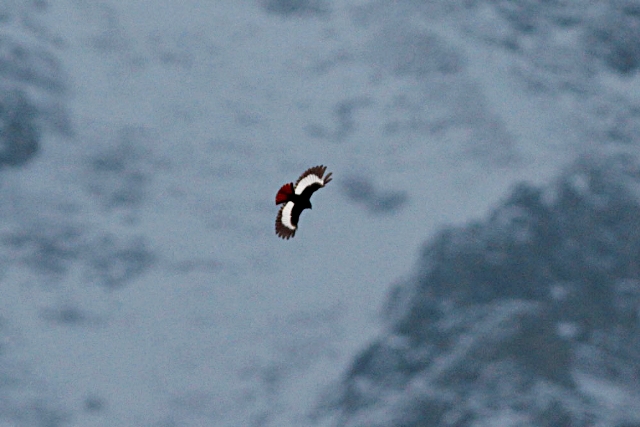
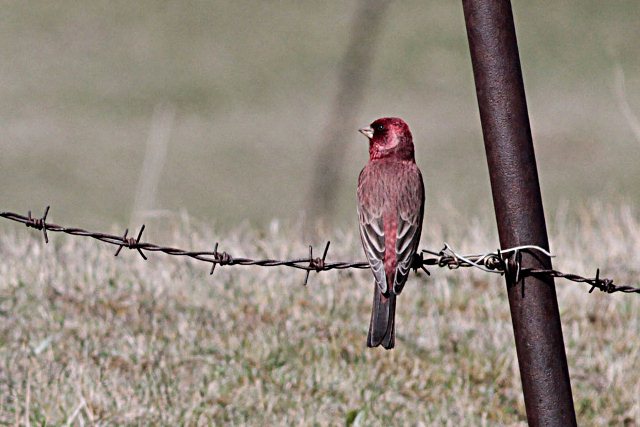
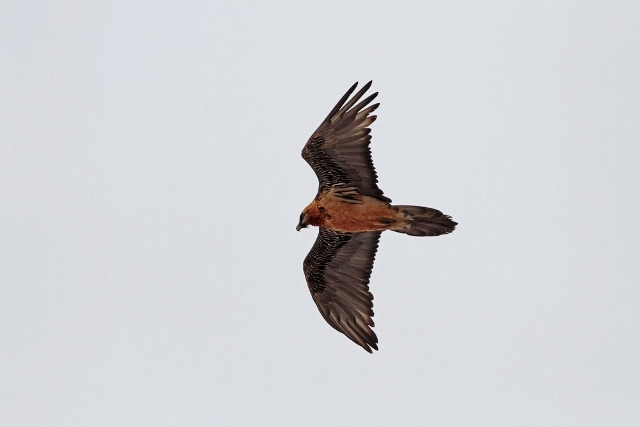
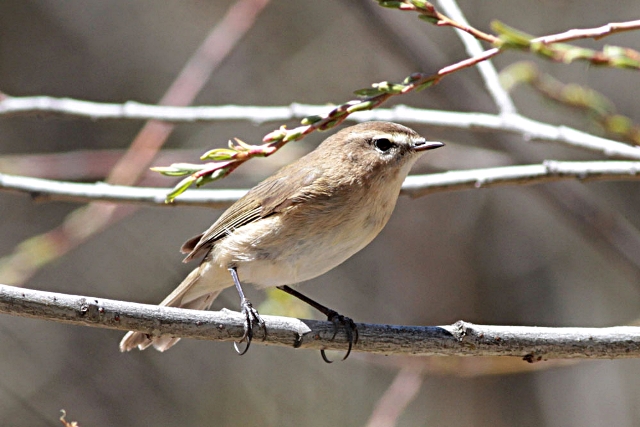
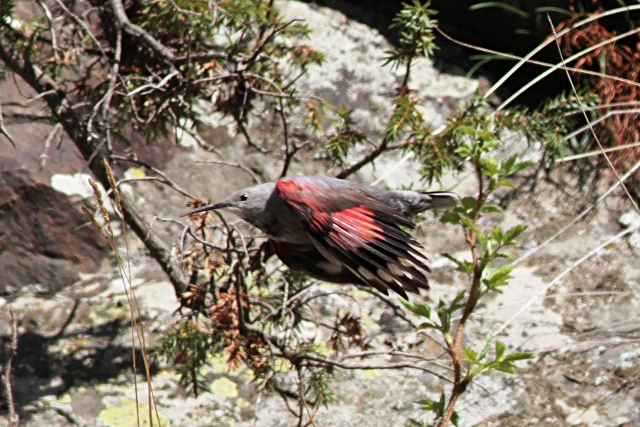
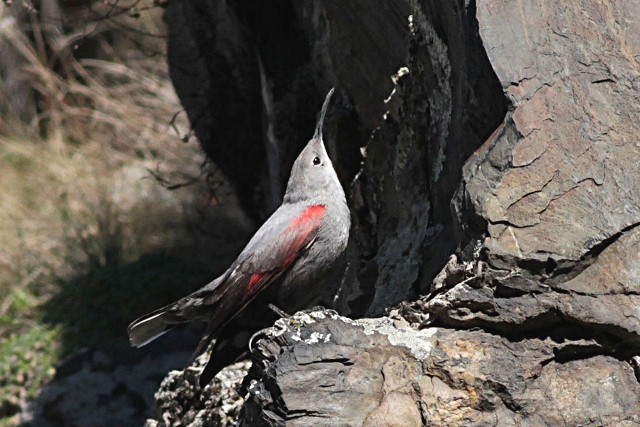
April 24: Gavin Bieber on his just-concluded Colorado: Lekking Grouse tour
Early spring in Colorado is a dynamic time, both for weather and for birds. This year we found the prairies to be much colder than average, although the previous week was very warm and many trees were already leafing out. Over much of the Rockies there was little snow, but during the tour a good winter storm (which we largely missed) brought a lot of snow and high winds to most of the state. If the weather and habitats were varied the birds were even more so. Of course the highlight honors of any spring Colorado trip must fall to the grouse. This year we had perhaps the best views of displaying Greater Prairie-Chickens that we have ever had, and viewed the stately but somehow supercilious displays of Greater and Gunnison Sage-Grouse against beautiful backdrops. The supporting cast was wonderful as well; from the first-returning shorebirds using prairie reservoirs as stopover sites, to our hard-fought views of a Mountain Plover in a windswept field and a Prairie Falcon perched on a red rock cliff near Denver, there just seemed to be quality birds at every turn!
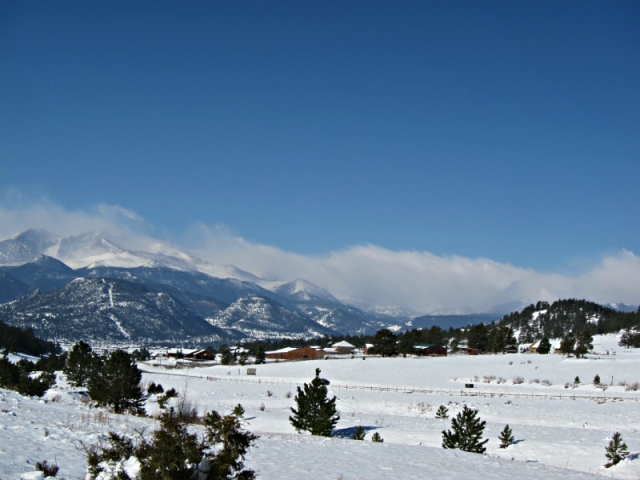
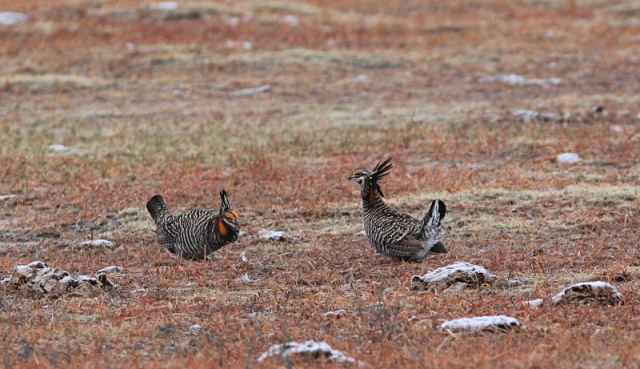
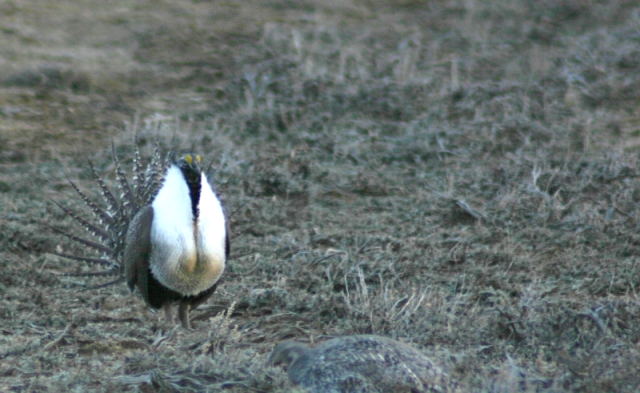
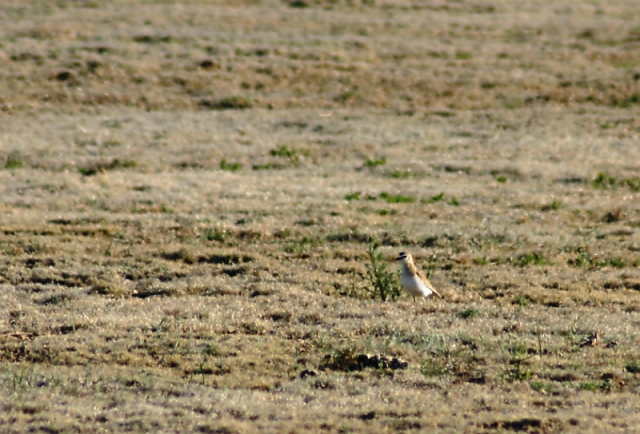
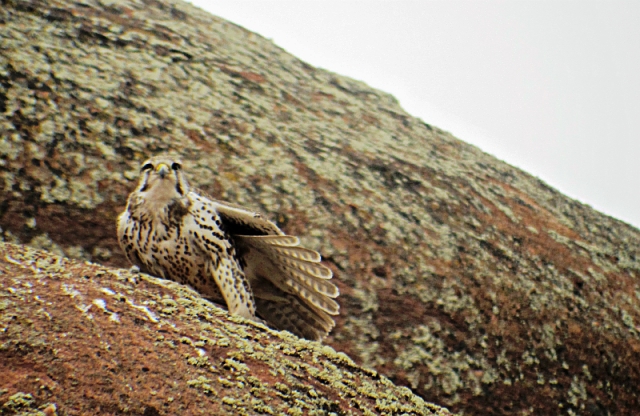
April 22: Rich Hoyer on his just-concluded tour of Jamaica
For the first time in about 20 years (personally my 14th tour here), we managed to see all possible endemic species and subspecies – many of which will eventually be considered full species once the data is in (45 taxa in total). Perhaps the most difficult two of the group are Greater Antillean Elaenia, rather uncommon and requiring a late spring visit, and Plain Pigeon, which is downright rare; we had good looks at both. Everyone was especially charmed by Jamaican Tody (below), fortunately a common bird, bewitched by the Crested Quail-Dove, a secretive bird I haven’t missed but never take for granted, and impressed by Marshall’s Pen and our host there Ann Sutton. It was here we had a Jamaican Owl on its day roost each of three days, Vervain Hummingbirds feeding in the garden (they don’t make hummingbird feeders small enough for this one), and the endemic Jamaican Mestra (all with photos below). Another favorite were two Yellow-breasted Crakes chasing each other, with two more calling unseen across the channel, and nearly as exciting was a Northern Potoo in the Port Royal Mountains, probably on a “nest” (photo below). Add in the lovely scenery, many endemic lizards, plants, and bugs, delicious food, and friendly people, and this turned out to be a superb tour.
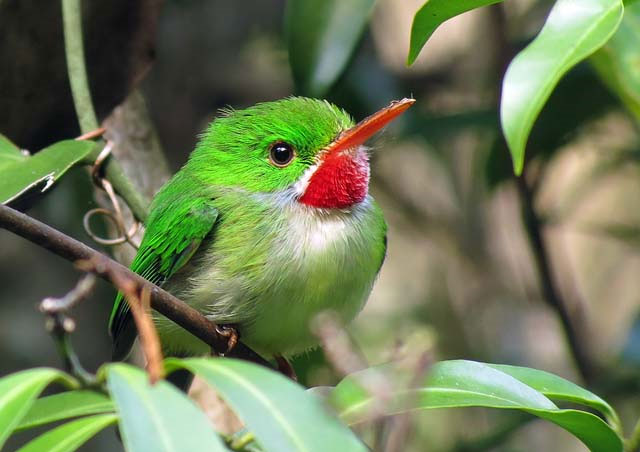



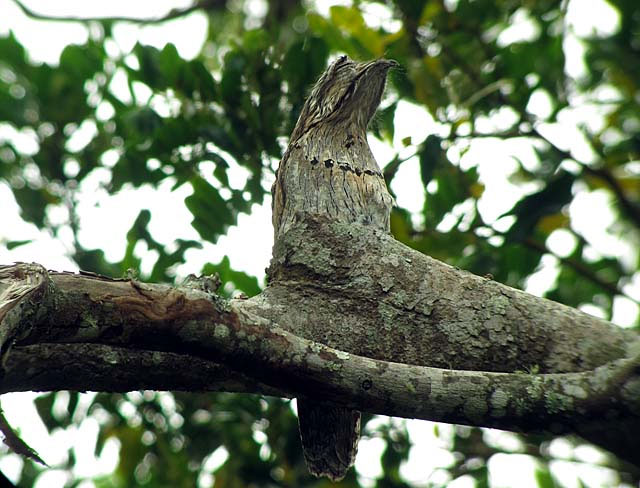
April 8: Steve Howell and Jon Dunn on their just-concluded scout of Honduras
Yesterday we visited the cactus thorn forest of the upper Aguán Valley (below), home to the endemic Honduran Emerald (below), rediscovered only in 1988 but common and thriving now in a large reserve. The suite of other species not found on the humid coastal slope included endearing White-bellied Wrens and dazzling Salvin's Emeralds (both below). With reluctance we finally had to leave the luxury of Pico Bonito, where the grounds (below) and adjacent forest host many wonderful birds. Birds on our last morning around the lodge included toucans, motmots, 2 flocks of "White-chinned" Swifts, ethereal White Hawks, and (all below) another male Lovely Cotinga (seen to be molting when in flight!), four species of trogons including Black-throated, and a fiery-headed male Red-capped Manakin glowing in the forest understory. We look forward to returning next year with a group to this wonderful country, off the beaten track but with a stunning array of avian riches.
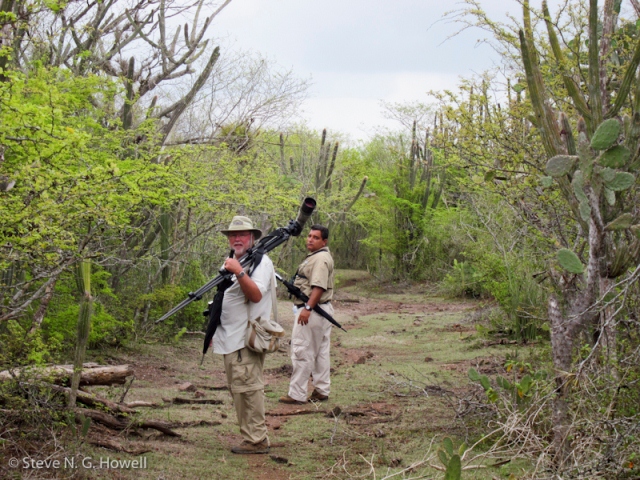
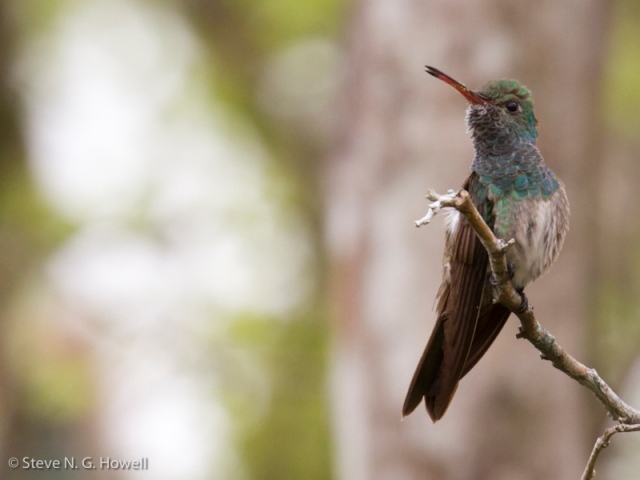
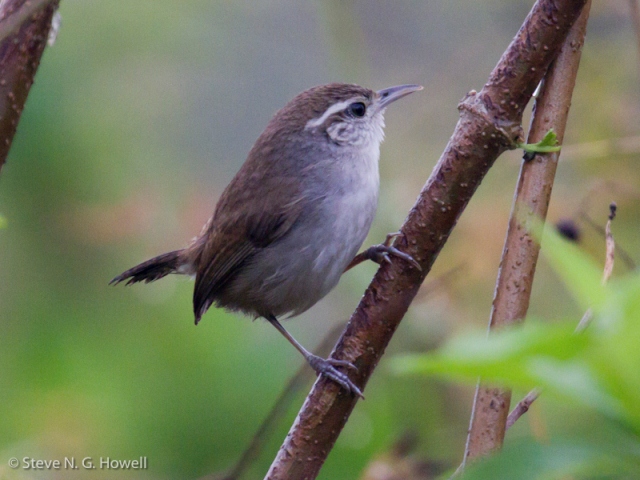
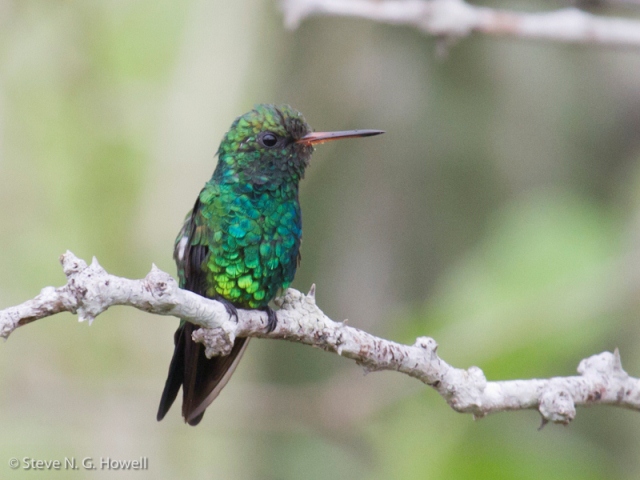
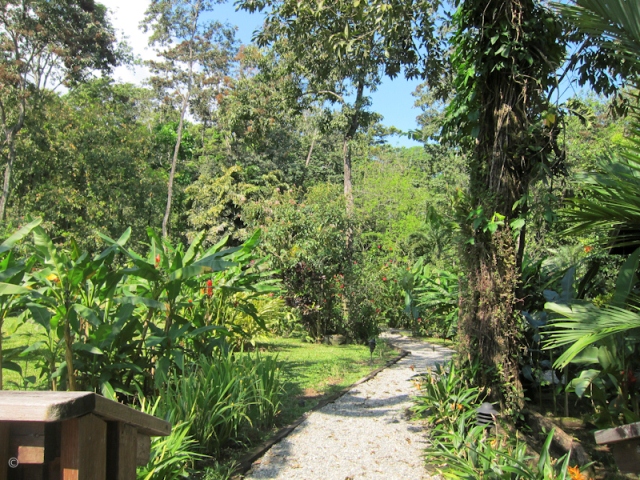
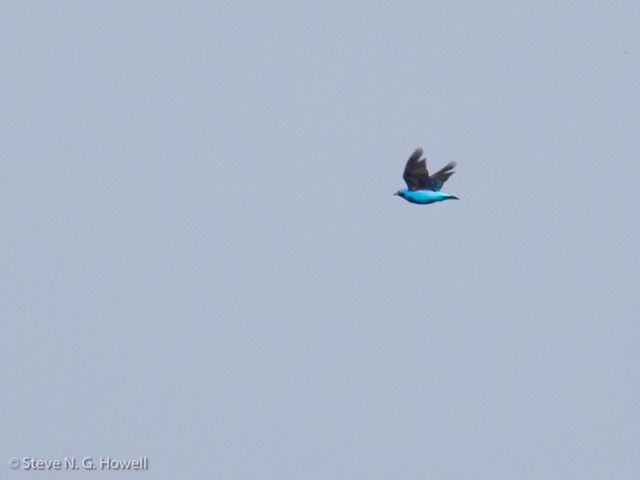
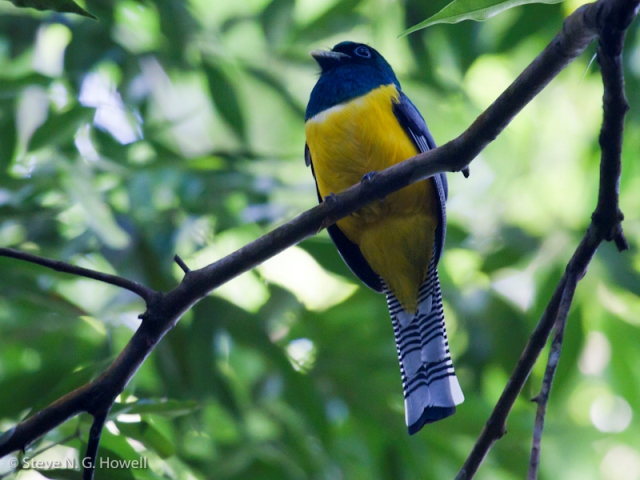
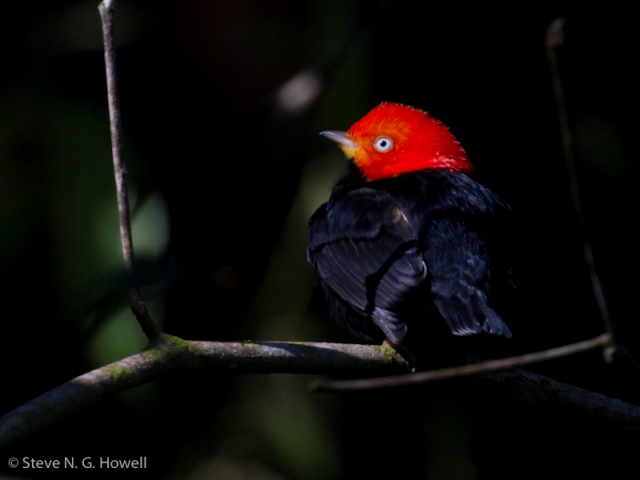
April 5: Steve Howell and Jon Dunn from their on-going scout of Honduras
Who knew that Vermiculated Screech-Owls called in the daytime, but the roosting pair we watched (below) sang several times over the course of our leisurely study. At the other end of the spectrum, we saw flocks of a species of Cypseloides swift (below), presumably White-chinned (except they looked unlike White-chinned in South America... Could they have been White-fronted Swift, known only from Mexico, or a new species altogether?). Less problematic to identify were the burningly bright male Lovely Cotingas, for which Pico Bonito is justly famous: we saw our first on the afternoon we arrived and then another while having breakfast the next day - what an amazing bird! Then into the forest, where migrants mixed with residents at fruiting trees, such as male Scarlet Tanager and Golden-hooded Tanager (below). The river offered a very refreshing swim, and 12 species of hummingbirds at the feeders ranged from an understated but nonetheless handsome Band-tailed Barbthroat to the decidedly overstated Violet Sabrewing and dazzling Violet-crowned Woodnymph (all below).
